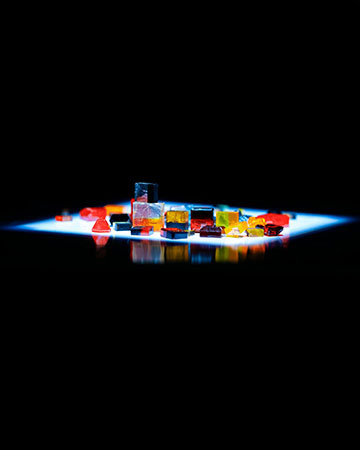![]()
Single-crystal perovskite films could enable more efficient, flexible solar cells such as the one pictured here. [Image: Yusheng Lei, University of California San Diego]
For many applications, single-crystal perovskite films perform better than their polycrystalline cousins. Creating thin sheets of such single-crystal semiconductors, however, has been notoriously difficult.
Now, a team at a U.S. university has developed a new method of fabricating single-crystal perovskite thin films that are also flexible (Nature, doi: 10.1038/s41586-020-2526-z). The method uses standard semiconductor fabrication processes, which could help integrate these perovskite films into a variety of devices, from solar cells to LEDs.
Perovskite problems
Spin coating, the usual method for depositing thin films onto flat substrates in the semiconductor industry, can generate only polycrystalline perovskite films with many defects, says Sheng Xu, a nanoengineering professor at the University of California San Diego (UCSD), USA. Organic–inorganic hybrid halide perovskites, such as methylammonium lead halide, easily grow into large bulk single crystals, but these chunks have little use in modern devices. Previous efforts to make single-crystal films out of this type of perovskite have yielded only small-scale results.
Xu, who heads a “soft electronics” research group at UCSD, says this investigation of perovskite fabrication grew out of discussions with one of his doctoral students, Yusheng Lei, who became the lead author on the study. Lei, Xu, graduate student Yimu Chen and their colleagues realized that they knew some techniques that might alleviate the problems with growing single-crystal films.
Growing thin films

Graded single-crystal perovskites. [Image: Yusheng Lei, University of California San Diego]
The UCSD fabrication process begins with etching a mask pattern onto a bulk crystal of hybrid perovskite. The mask resembles the heated part of a waffle iron—except that the raised “squares” are about 1 μm across. Using the polymer parylene as a transfer agent, the researchers peel off a single-crystal layer and transfer it to an arbitrary substrate, where it continues to grow and fill in its gaps—rather like filling a waffle iron with batter. The result: a completely merged single-crystal thin film of perovskite, without visible grain boundaries.
With this method, the team created continuous single-crystal films up to 5.5 cm by 5.5 cm square, with controlled thicknesses ranging from about 600 nm to 100 μm. The researchers also achieved a smooth transition from pure methylammonium lead halide to a halide with a blend of lead and tin.
Future prospects
Lei says that material growth is only the most basic step in designing useful perovskite-based devices. For example, perovskite solar cells must contain electron- and hole-transporting layers in addition to the electrodes, and all the interfaces must be specially designed for efficient charge collection.
Making single-crystal perovskite solar cells will require a totally different manufacturing process from polycrystalline photovoltaic cells, but this is a challenge that Lei aims to pursue. Xu is also working to improve the interfaces between single-crystal perovskite films and layers of other materials.
